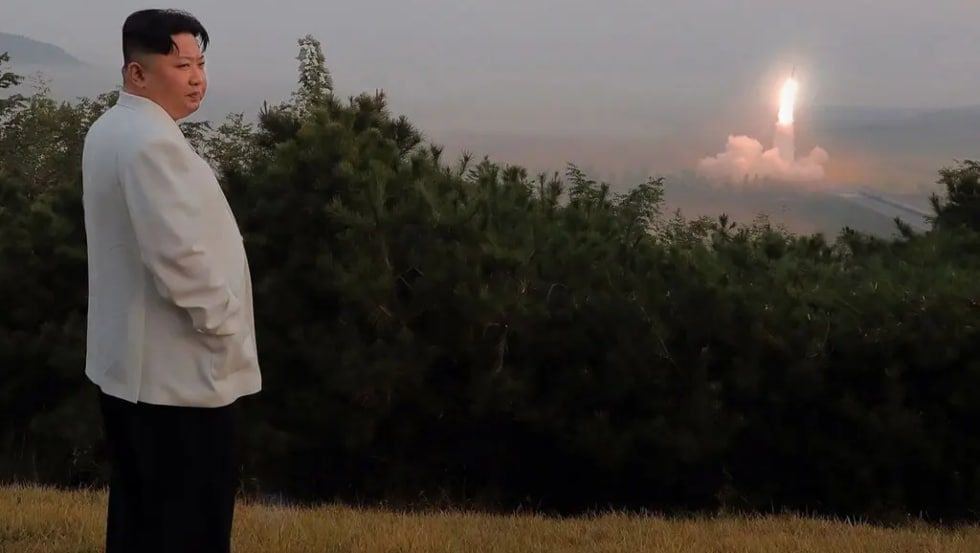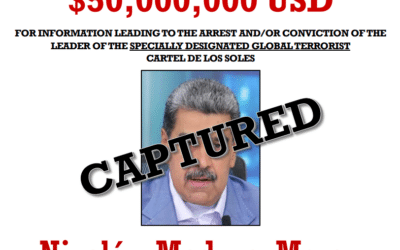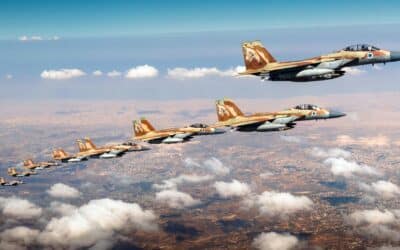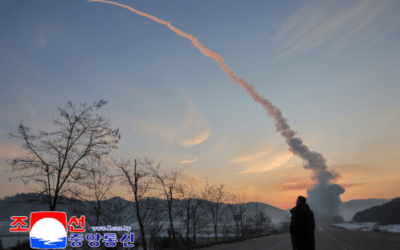Pyongyang claims it is now able to conduct missile launches using underwater silos. The announcement came after a series of North Korean missile tests over the past two weeks. Meanwhile, Seoul is concerned about its air fleet’s reliability.
North Korean Supreme Leader Kim Jong-un oversaw the successful test of the underwater launched missile, according to the state-run Korean Central News Agency (KCNA). Photos showing a ballistic missile rising from beneath the water were published by the outlet.
Pyongyang has carried out 12 missile tests over the past two weeks. Eleven of the 12 munitions were short-range ballistic missiles. North Korea says the underwater missile test occurred on September 25, and involved the simulated loading of “tactical nuclear warheads at a silo under a reservoir.”
KCNA went on to report that recent missile tests were preparing North Korean forces to “wipe out” targets in South Korea.
“Through seven launching drills of the tactical nuclear operation units, the actuality of the nuclear combat forces of our state and its militant effectiveness and actual war capabilities, which is fully ready to hit and wipe out the set objects at the intended places in the set time, were displayed to the full,” the outlet wrote.
The announcement was made on the 77th anniversary of the ruling Workers’ Party of Korea. To mark the date, Kim’s government announced other nuclear and missile program developments.
Pyongyang said its October 4 test involved a new type of intermediate missile. The missile’s flight path took it over Japanese territory.
North Korea also claims it carried out several simulations of attacks on South Korean targets, one of which involved 150 fighter planes. A separate military exercise focused on taking out Seoul’s airports.
Washington and Seoul also carried out a series of military drills in recent weeks, which the DPRK has repeatedly condemned as provocative. The USS Ronald Reagan made a port call in South Korea, marking the first visit by an American aircraft carrier in years, while the two allies also conducted joint war games with Tokyo. South Korea and the US carried out additional bilateral missile tests. though those trials encountered trouble after a South Korean missile malfunctioned and crashed into an airbase.
Vice President Kamala Harris further inflamed tensions when she traveled to the North Korean border and slammed Pyongyang, demanding that North Korea denuclearize while indicating the United States would defend South Korea with its nuclear arsenal.
However, Seoul is increasingly concerned that, if called into action, its American-made warplanes will not be able to perform. According to data from the South Korean air force, its Lockheed Martin-manufactured F-35s were fit to carry out missions for just a dozen days in 2021. The fifth-generation aircraft are performing slightly better in 2022, however, with each aircraft mission ready for 11 days in the first half of the year.
According to Yonhap News Agency, South Korean F-35s have been “operationally unready” 234 times over an 18-month period, a figure that is causing concern in Seoul.































